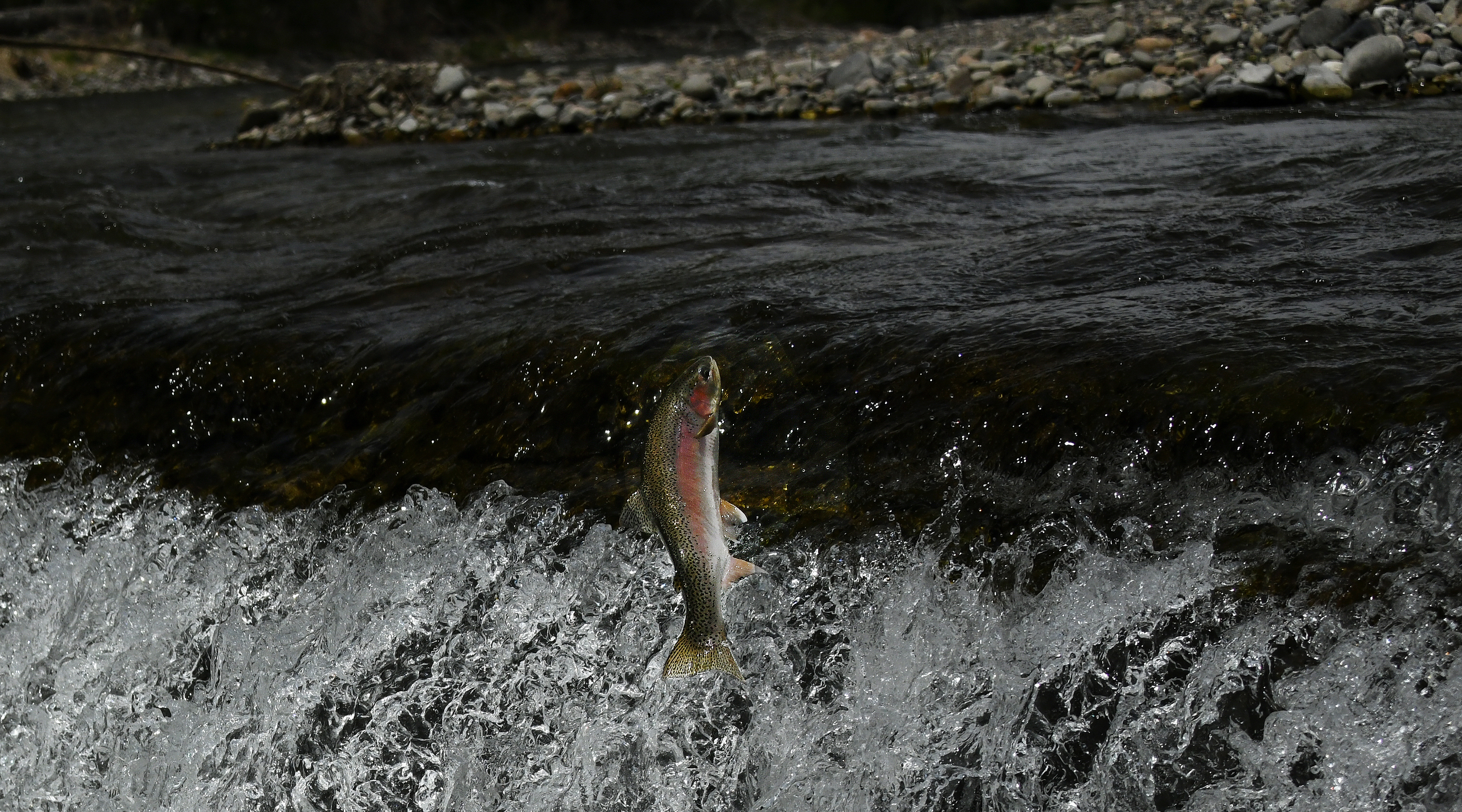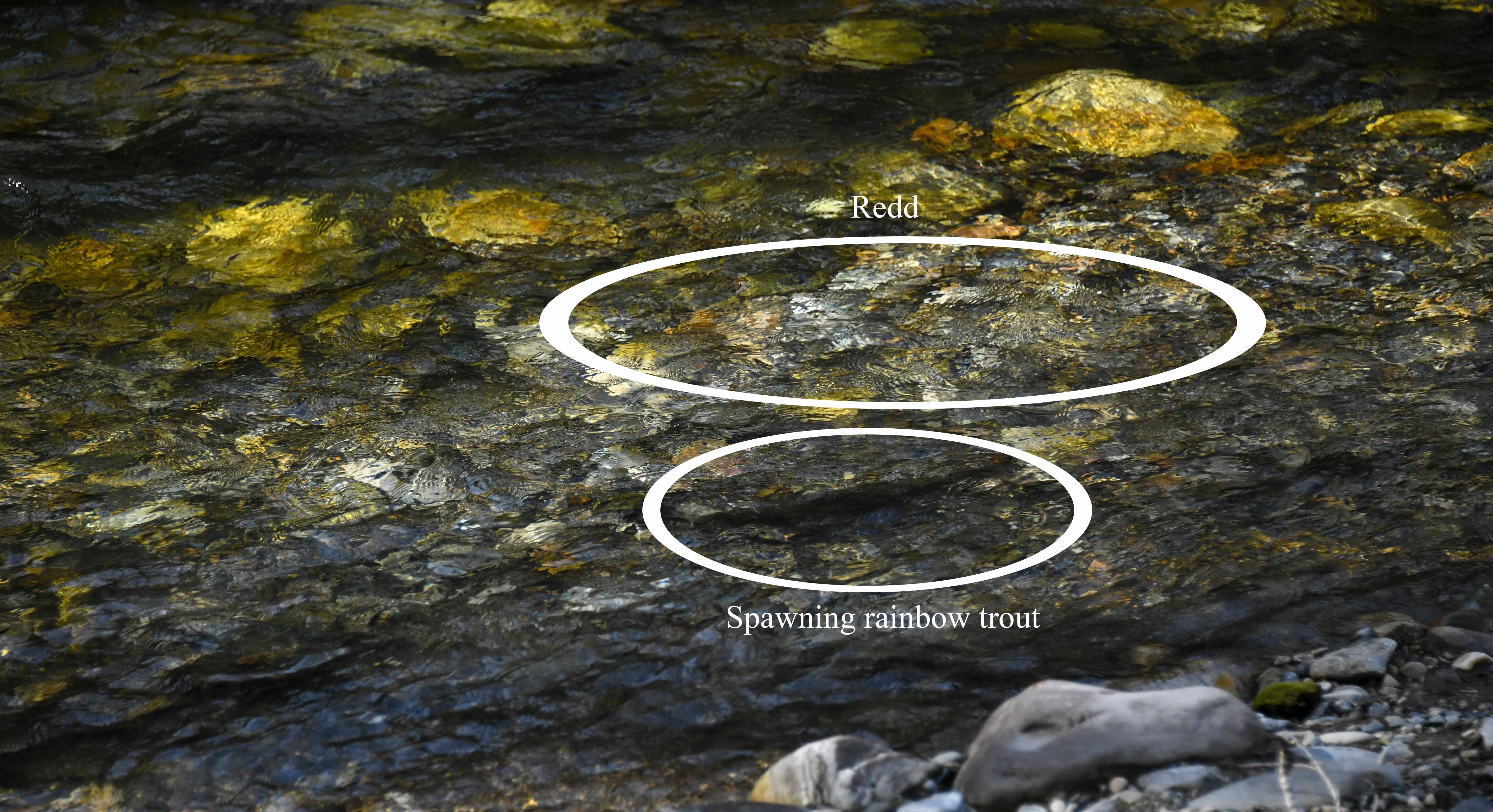Recent low water in the Wood River Valley due to a below average winter snowpack has made it easier to witness the annual spring spawning ritual of rainbow trout in the Big Wood River and its tributaries. By regulation, many rivers and streams across the state, including the Big Wood River and Silver Creek are closed to fishing in April and much of May to protect these spawning fish when they are the most vulnerable.
What triggers rainbow trout to spawn?
Rainbow trout typically become sexually mature at 2 or 3 years of age. There are natural cues that will trigger trout to spawn, such as the photoperiod, or length of day, and the temperature of the water. As the days grow longer, and the water warms to the upper-40s F., rainbow trout will begin to travel upstream to areas that provide spawning habitat. Migrating fish can often be seen jumping over waterfalls or small diversion dams to get to these spawning grounds. Fish will seek out areas where the water is well oxygenated and there is a gravel stream bottom. Of particular importance, is that the gravels are clean and not filled with silt or sediment.

A rainbow trout attempts to jump over a small diversion dam on the Big Wood River.
Time to build a nest, or redd
Female rainbow trout build a nest, or redd, where she will deposit her eggs. Using her tail, she will rapidly fan the gravels, causing them to move and create a depression in the gravel. Once a redd is made, males will compete for the opportunity to mate with the female by timing the release of milt, or sperm, into the redd as the female deposits her eggs. A typical two-pound female will have approximately 2,000 – 3,000 eggs.
Redd’s can be easily seen by looking for bright clean gravel exposed on the river bottom. The gravel is typically much lighter color than the surrounding gravels. It may take the female rainbow trout up to a week to build a redd.

A large rainbow trout swims near a newly dug redd in the East Fork of the Big Wood River.
The female will release her eggs into the small spaces between the gravels where they can receive oxygen from the passing water. The female then repeatedly fans her tail across the gravel and covers up the eggs, securing them in place, while providing protection from predators.
With water temperatures in the upper-40s F. the eggs will take about 7 weeks to hatch. The small sac fry will remain in the gravels for protection as they use up their nutritious yolk sac for food until they can swim up out of the gravel in just a few weeks. Once these young fish, or fry, emerge from the gravels they will start to eat a variety of aquatic insects or zooplankton, hopefully on their way to becoming an adult.
Is there a difference between a wild and a hatchery rainbow trout?
Both wild and hatchery rainbow trout look the same physically. However, all rainbow trout eggs produced in Idaho’s hatcheries, with very few exceptions, are pressure shocked in the eyed-egg stage, making them sterile, which is to reduce the risk of hatchery trout spawning with wild trout. Unlike hatchery steelhead (the ocean going rainbow trout), the majority of hatchery rainbow trout do not have their adipose fin clipped before release.
For more information about fisheries in the Magic Valley Region, please contact the Regional Office at (208) 324-4359.

